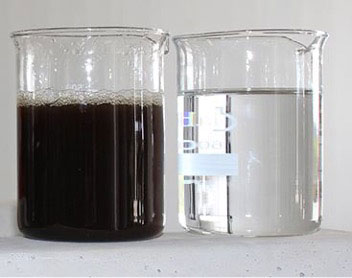Digestate treatment by filtration with ceramic membranes
The growing number of biogas plants makes it increasingly difficult to return the fermentation residue substrates to green spaces or arable land. By using atech ceramic membranes in a biogas plant, a significant improvement in wastewater quality can be achieved. This significantly improves the performance of the downstream RO system.
Ultrafiltration with atech ceramic membranes serves as a preliminary stage for a reverse osmosis
Especially large-scale plants are often unable to find sufficient disposal possibilities in acceptable distances. Therefore it is sensible to treat fermentation residue substrates by suitable screening processes in such a way that they can be discharged and re-used in the form of free flowing solids and nutrient-poor process service water. The Ultrafiltration serves as a preliminary stage for a reverse osmosis.
Liquid fermentation product has been awarded the RAL quality mark
Fermentation residues undergo a complete treatment process developed by A3-Water Solutions GmbH, involving the following three treatment stages:
Decanter, combined with metered adding of precipitants as needed to eliminate solids and to reduce organic components, followed by screening.
Ultrafiltration using ceramic membranes made by atech innovations gmbh to re-duce undissolved macromolecules.
Reverse osmosis to remove dissolved low-molecular substances such as hardness constituents and salts. The liquid fermentation residue obtained as concentrate in the reverse osmosis plant complies with the legal stipulations.
Meanwhile, the liquid fermentation product has been awarded the RAL quality mark “Fermentation Product” (RAL-GZ 256/1). Similar to the liquid fermentation product, the solid fermentation product obtained from the pressure worm, or the decanter, or the screen complies with all applicable requirements and has also been awarded the RAL-GZ 256/1 quality mark.
Advantages and added value for the customer:
The liquid fermentation residue obtained as concentrate in the reverse osmosis plant complies with the legal stipulations of the German Regulation on the Principles of Good Manuringnand Fertilising Practice (“Düngeverordnung”), the German Ordinance on Biowastes (“Bioabfallverordnung”) and the German Soil Protection and Contaminated Sites Ordinance (“Bodenschutz- und Altlastenverordnung”). The mass concentrations of nutrient salts contained in the concentrates exceed those in the original, untreated fermentation residue substrates by approximately 10 to 15 mass percent.

